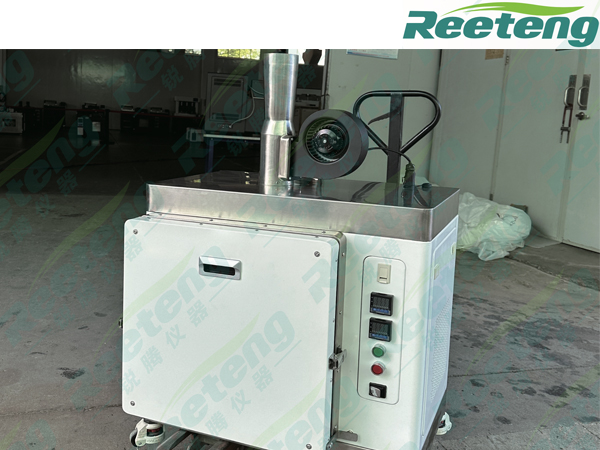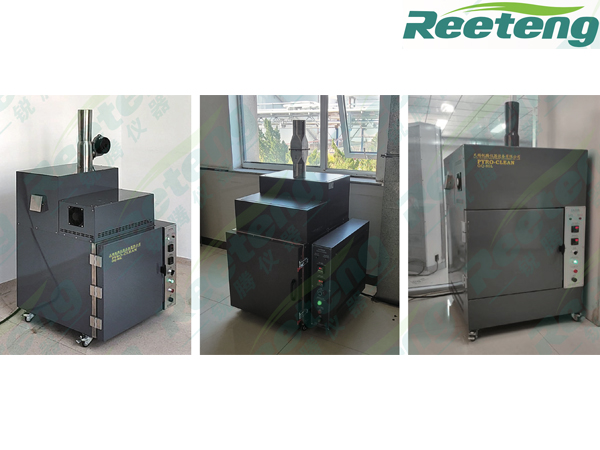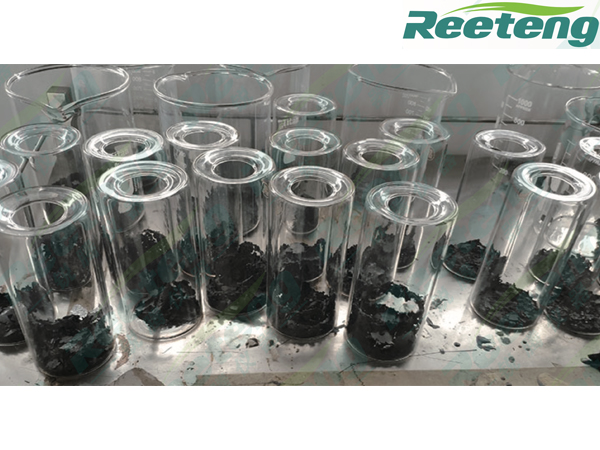高温清洗机
高温清洗机(处理有机物,排放二氧化碳和水)
高温清洗机可以用来清洗残留在玻璃或金属零件上的各种有机物,这些有机物包括聚合物、蜡、树脂、沥青、焦油或者其他 类似的污染物。通过高温热分解可完全去除掉这些有机物,从而排除了溶剂的使用或者化学清洗。实际上,各种类型的耐热玻璃和 金属零件都能用高温清洗装置来清洗。只要是在高温下不会损坏的零件,并且需要清洗的残留物是有机物质,能通过加热得以清 除,那么高温清洗炉就可以替代溶剂和化学清洗。
其原理是在高温环境下利用有机物分子的热稳定性差的原理,同时加入裂解催化(有机物的热分解一般比较缓慢,需要加入 活性剂加速反应),使其分解成小分子从而破坏其原有的物理性能,达到清洗的目的。清洗产生的废气生成二氧化碳和水排出室 外。对于易燃易爆的气体,设备配套氮气吹扫装置,以保证在惰性气体的保护下进行清洗;并且配有泄压保护装置,即使遭遇气 体瞬间膨胀(轻微涨爆)也能实现自动开启泄压,泄压完成自动关闭,以保证设备和实验人员的安全。
HHigh-temperature cleaners can be used to clean a variety of organic compounds that remain on glass or metal parts, including polymers, waxes, resins, asphalt, tar, or other similar contaminants. These organics can be completely removed by pyrothermal decomposition, eliminat- ing the use of solvents or chemical cleaning. In fact, all types of heat-resistant glass and metal parts can be cleaned with high-temperature cleaning devices. As long as the high temperature does not damage the parts to be cleaned and the residue to be cleaned is organic and can be removed by heating, the high-temperature cleaning furnace can be used as an alternative to solvent and chemical cleaning.
HHigh-temperature cleaners can be used to clean a variety of organic compounds that remain on glass or metal parts, including polymers, waxes, resins, asphalt, tar, or other similar contaminants. These organics can be completely removed by pyrothermal decomposition, eliminat- ing the use of solvents or chemical cleaning. In fact, all types of heat-resistant glass and metal parts can be cleaned with high-temperature cleaning devices. As long as the high temperature does not damage the parts to be cleaned and the residue to be cleaned is organic and can be removed by heating, the high-temperature cleaning furnace can be used as an alternative to solvent and chemical cleaning.
Its principle is to use the principle of poor thermal stability of organic molecules in a high-temperature environment, and at the same time add cracking catalysis (the thermal decomposition of organic matter is generally relatively slow, and it is necessary to add an active agent to accelerate the reaction), so that it can be decomposed into small molecules to destroy its original physical properties and achieve the purpose of cleaning. The exhaust gases from the cleaning generate carbon dioxide and water that are discharged to the outside. For flammable and explosive gases, the equipment is equipped with a nitrogen purge device to ensure that it is cleaned under the protection of inert gas; And it is equipped with a pressure relief protection device, which can automatically open and relieve pressure even if it encounters instantaneous gas expansion (slight explosion), and automatically close after pressure relief is completed, so as to ensure the safety of equipment and experi- menters.




